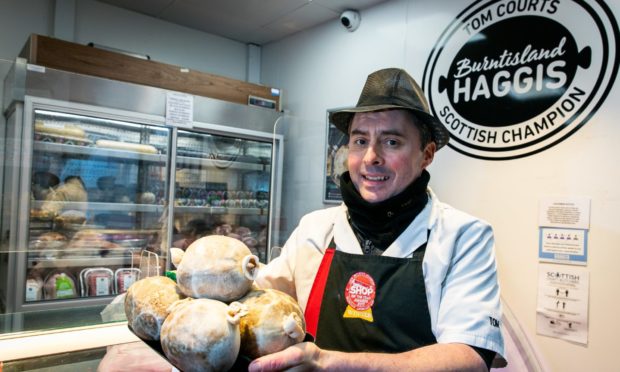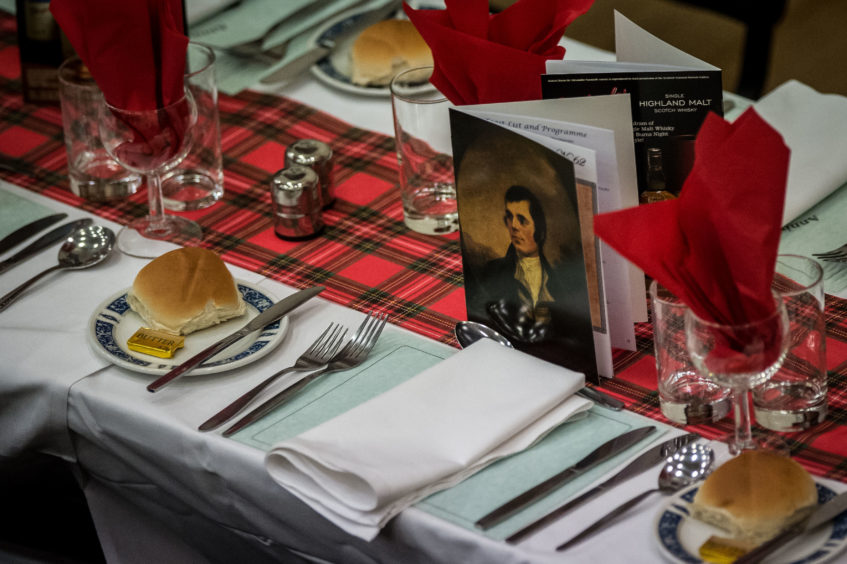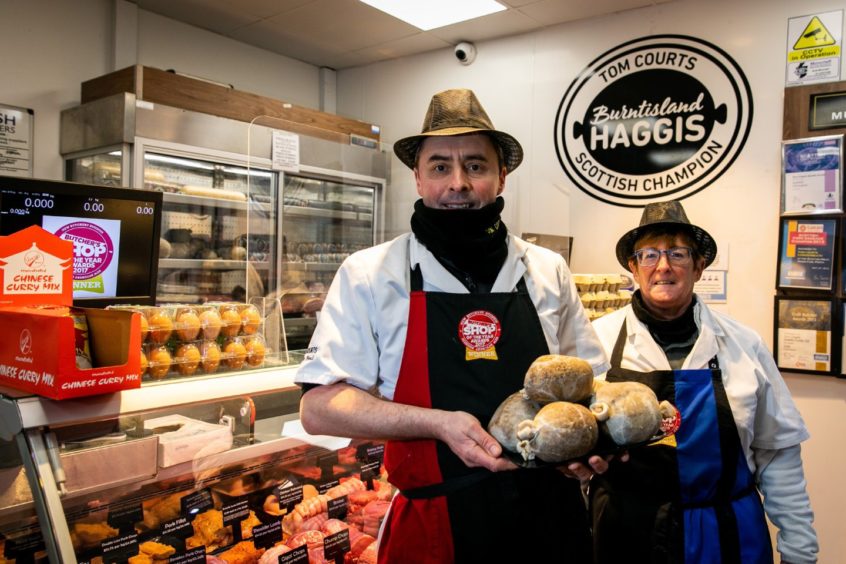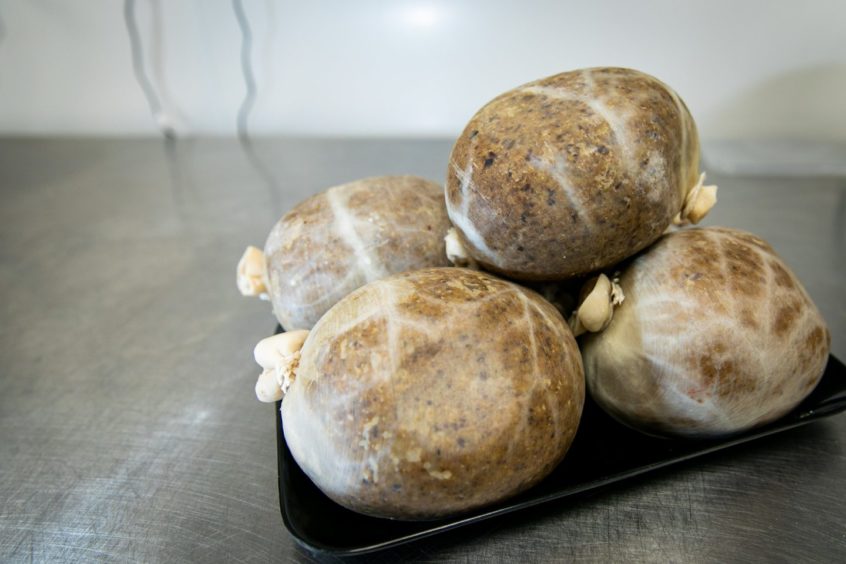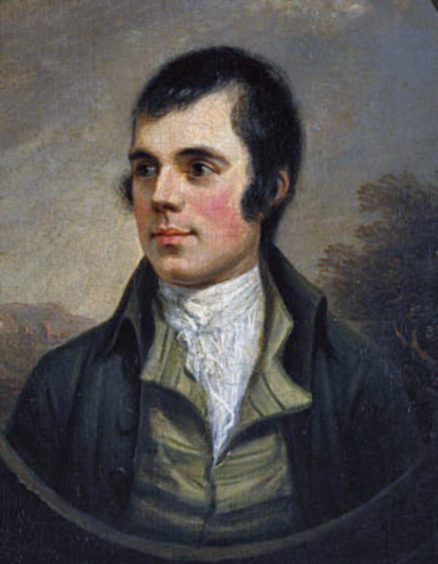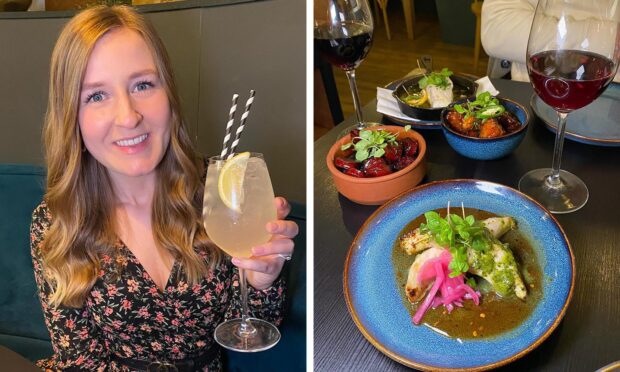Haggis is widely regarded as our national dish, but did you know that it may have its origins in England?
The Scottish staple haggis has been around for hundreds of years and, although opinion is divided about it, if you love eating haggis then you will not a hear word against it.
It certainly has a Marmite factor – you either love it or hate it – and at this time of the year the haggis lovers come into their own as they celebrate the life of the man who did more for haggis than anyone, Robert Burns.
Burns loved writing his poetry and he loved his haggis enough to compose the famous “Address to a Haggis“.
Regarded as Scotland’s national dish and the centrepiece of a Burns Supper, many people actually try haggis for the first time on Burns Nicht – January 25.
However, it seems that the origins may not actually be in this country as some suggest that what we look on as our national dish was actually invented by the English.
Food historian Catherine Brown has discovered early printed references to the dish in a recipe book dated 1615, The English Hus-wife by Gervase Markham.
This was published at least 171 years before Robert Burns penned his poem Address to a Haggis, which made the delicacy famous.
She said: “The ‘haggis’ is not exclusively Scottish. I’ve found medieval and early-modern English manuscripts which describe chopping up the innards and cooking them in the stomach bag.
“The word itself is English, not exclusively Scottish, its derivation unknown. There are plenty of medieval and early English references to haggis, especially where oatmeal was grown.
“It survived in England until Scotland claimed it as its national dish – once Robert Burns wrote his ‘Address to a Haggis’.”
‘Rubbish!’
The reigning Scottish Haggis Champion is Tom Courts from Tom Courts Butchers, based in Burntisland, Fife.
Mr Courts completely refutes any suggestion that our national dish could have originated in England.
“That’s rubbish – no chance. It was considered a peasant food back in the days of Rabbie Burns, but there have been a number of conflicting stories about how haggis was invented, there have even been stories that the Vikings invented haggis, but as far as I am concerned, just like whisky and football, haggis was invented in Scotland.”
Becoming Scottish champion was a proud day for Mr Courts, a title every haggis maker in Scotland strives to achieve.
“I am a second-generation Scottish craft butcher and it is fair to say that every craft butcher in Scotland thinks that they make the best haggis.
“Every second year our meat federation runs a competition to find the Scottish haggis champion and it is considered the holy grail of awards in our industry,” he said.
Renowned
“Take, for example, if a tourist arrives at Edinburgh Airport and you asked them a random question to name a Scottish drink and a Scottish food they would probably say whisky and haggis.
“Haggis is renowned throughout the world as the quintessential Scottish dish and to be crowned Scottish champion is quite an accolade in our industry. There are many butchers who have gone through their entire career and never got anywhere near it.
“I inherited my father’s recipe which goes back over 50 years and I spent around 10 years trying to put my own spin on it and trying to perfect it in my mind. I came up with various samples throughout the years which varied from the perfect to the horrific.
“In 2015 when I entered the competition when I was reserve champion I thought I would never be as close to winning it again. I then sold my business after that, which was in Cowdenbeath, and retired for a year, but I got fed up and started back again in Burntisland, my home town.
“The haggis competition came round again in 2019 and I was lucky enough to win it and the chap who won it previous to me was reserve champion to me so I turned the tables on him. If not the highlight, it’s certainly one of the highlights of my career.
“On the back of that, we set up a website, Burntisland Haggis, and we are now sending haggis all over the UK and we are particularly busy at this time of the year – it’s a great thing.”
Recipe’s a secret
Being crowned the best haggis maker in the country is a real honour because, as Mr Courts explained, there are some outstanding products all over the country – but it’s going to cost you a seven-figure sum if you want his secret.
He added: “I’ve tasted quite a number of haggis from my colleagues in the Scottish craft butchers and I have never tasted a bad one. These are craftsmen who put their heart and soul into the products that they make. I prefer my own and I have to say that.
“Anyone asking me what I put in my haggis I call that the million-pound question as I will answer it if you give a million pounds!
“There are only two people in my firm who know the recipe – me and my production manager who himself is held to secrecy through a confidentiality agreement. It’s just like Irn-Bru, we do take it very seriously and every single batch we make has to be the same as the batch we made the day before or the week before.”
Address to a Haggis
Fair fa’ your honest, sonsie face,
Great chieftain o’ the pudding-race!
Aboon them a’ ye tak your place,
Painch, tripe, or thairm :
Weel are ye wordy o’a grace
As lang’s my arm.
The groaning trencher there ye fill,
Your hurdies like a distant hill,
Your pin wad help to mend a mill
In time o’ need,
While thro’ your pores the dews distil
Like amber bead.
His knife see rustic Labour dight,
An’ cut you up wi’ ready sleight,
Trenching your gushing entrails bright,
Like ony ditch;
And then, O what a glorious sight,
Warm-reekin’, rich!
Then, horn for horn, they stretch an’ strive:
Deil tak the hindmost! on they drive,
Till a’ their weel-swall’d kytes belyve
Are bent like drums;
Then auld Guidman, maist like to rive,
Bethankit! hums.
Is there that owre his French ragout
Or olio that wad staw a sow,
Or fricassee wad make her spew
Wi’ perfect sconner,
Looks down wi’ sneering, scornfu’ view
On sic a dinner?
Poor devil! see him owre his trash,
As feckless as wither’d rash,
His spindle shank, a guid whip-lash;
His nieve a nit;
Thro’ bloody flood or field to dash,
O how unfit!
But mark the Rustic, haggis-fed,
The trembling earth resounds his tread.
Clap in his walie nieve a blade,
He’ll mak it whissle;
An’ legs an’ arms, an’ heads will sned,
Like taps o’ thrissle.
Ye Pow’rs, wha mak mankind your care,
And dish them out their bill o’ fare,
Auld Scotland wants nae skinking ware
That jaups in luggies;
But, if ye wish her gratefu’ prayer
Gie her a haggis!
More about haggis
Graeme’s theory is that Burns Night has haggis to thank for its longevity
